Friday, 28 November 2025
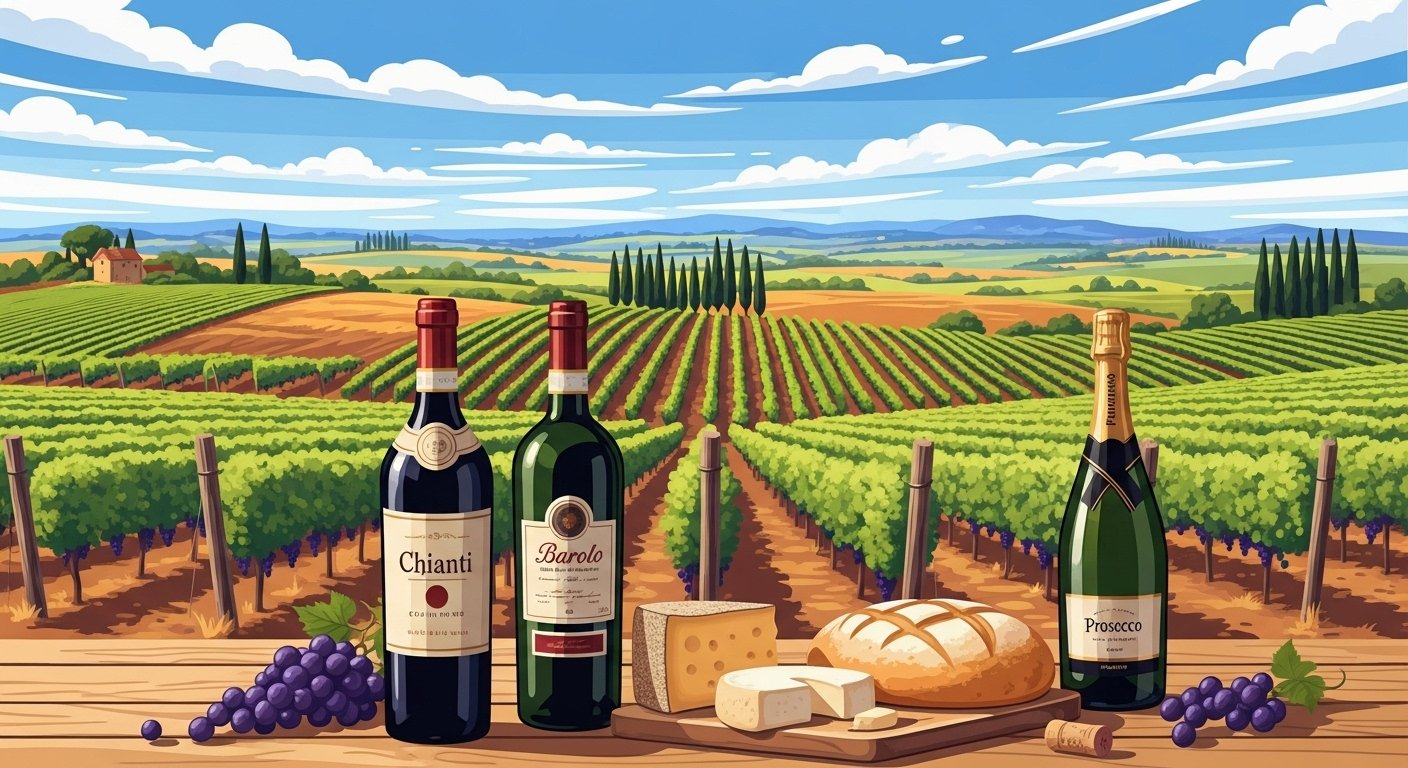

In this exclusive conversation with Agrospectrum and NUFFOODS Spectrum, Dr. Katarina Andersson, Founder, WinesOfItaly, relives the transformative moment she first stood in an Oseleta vineyard near Lake Garda — a sunlit afternoon that changed how she saw Valpolicella forever. What began as curiosity about a forgotten grape turned into a revelation about Italy’s evolving wine identity — one rooted in authenticity, resilience, and a return to native traditions.
With passion and precision, Dr. Andersson unpacks the renaissance of Oseleta, its role in redefining Valpolicella beyond Amarone, and the bold experiments of pioneers like Eleva Winery. From the new language of terroir storytelling to the reimagining of luxury as meaning and connection rather than price and prestige, she paints a vision of wine’s metamodern future — where rarity, culture, and conscience intertwine. By 2030, Dr. Andersson believes grapes like Oseleta could become the heartbeat of a new generation of wine lovers — making wine not just sophisticated again, but soulful and joyfully human.
The Moment of Discovery
Take us back to that autumn day near Lake Garda. What was it about standing in an Oseleta vineyard that made you feel “hooked on a feeling”? Was this the moment that reframed your view of Valpolicella beyond Amarone?
It was on a beautiful and sunny autumn or winter afternoon back in 2017, that I visited the Bardolino Chiaretto area by Lake Garda as part of a press tour. We had a short walk through the small Oseleta vinyard plot at Villa Cordevigo before we entered the resort to taste through the Bardolino consortium’s Chiaretto wines (Consorzio Vini Bardolino DOC).
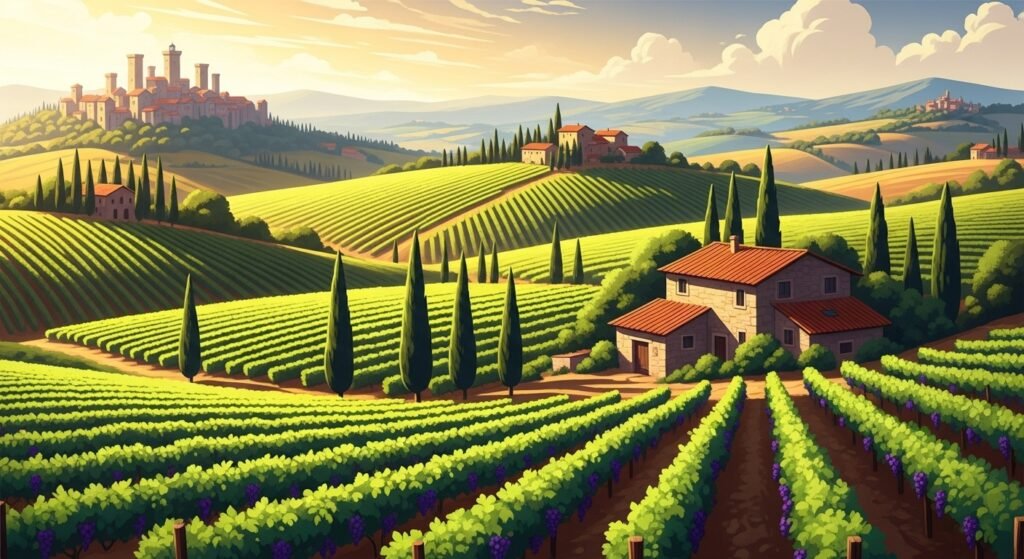
During that period, in 2017, when I visited the Oseleta vineyard, I had been hosting my weekly WinesOfItaly livestreams about smaller to mid-sized, more artisanal wine producers, lesser-known wine regions, and native grapes for a couple of years. I was always curious – I still am – to discover new things about grapes or wine areas. Back in 2017, there were not many writers and bloggers who travelled through Italy in search of a native grape or a lesser-known wine or wine area. Today, everybody is an influencer in search of ‘unknown’ grapes or wines.
Anyway, I recall standing in the Oseleta vineyard with my fellow wine writers, taking photos and videos of the bare vines with their winter leaves, and I was eager to learn more about and taste a monovarietal Oseleta wine. I knew that there is usually a small percentage of Oseleta in the Valpolicella wines, but I had up until then never tasted a wine made with mainly Oseleta. I was hooked in that moment, standing in the winter beauty, with a hint of winter mystique in the late afternoon, thinking of this lesser-known grape so closely linked to Veneto wine history.
Luckily, a fellow Canadian wine writer who loves tannic wines asked Franco Cristoforetti, the owner of Villa Cordevigo and the president of the Bardolino Consortium at that time, if it would be possible to taste their monovarietal Oseleta wine. It felt a bit luxurious, as it is a wine that has been aged for a long time, and they produce only a limited number of bottles. When I tasted it, I was even more hooked, because, yes, it is tannic, but it is a grape that gives wine with a great personality. Oseleta is very recognisable in a wine, with its trademark tannins, red and darker fruity notes, herbal, spicy, and floral (violet) characteristics, freshness, and length.
A Grape’s Second Act
Oseleta was nearly forgotten because of its small berries and low yields. Why do you think it is now re-emerging as a variety of interest? What does its revival say about where the Italian wine industry is heading?
We are in a period when there is a big interest in native grapes, artisanal wineries, organic, biodynamic, natural viticulture and winemaking, sustainability, ethical winemaking, etc. I think it was in the late 1990s or the early 2000s, that revival of native grapes and starting to make more monovarietal wines started to get traction.
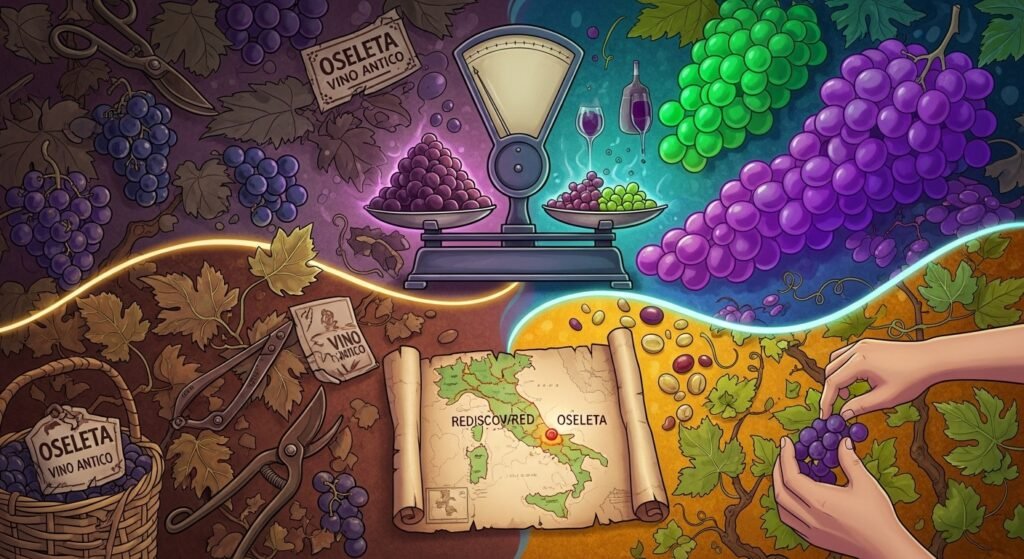
We can take the examples of Nero di Troia in Puglia and Ciliegiolo in Umbria and Tuscany, which before were mainly used as a blending grapes. They are grapes with a strong character, just as Oseleta, that were used to give freshness. elegance, strength, structure, color, aromas, tannins, etc to wines such as Rosso di Canosa for Nero di Troia; Montecucco Doc in Tuscany or Orvietano Rosso Doc in Umbria for Ciliegiolo; and Valpolicella wines and Veronese IGT for Oseleta.
I believe the rise of native grapes and monovarietal wines was partly a result of many smaller producers starting to bottle their own wines, mainly in the 1990s, after having mostly sold their wine in bulk or sold the grapes. This contributed to niche producers and niche productions, with a new generation seeking to produce more quality rather than quantity of wine. However, the market started to change, with a growing demand for authentic wines and a shift away from the usual brands, which were often made with international grapes such as Chardonnay, Merlot, and Cabernet Sauvignon.
This desire to explore local viticultural history, rare or forgotten grapes, and monovarietal wines would take off even more about 10-15 years ago. The focus on organic and sustainable viticulture has become increasingly important. The natural wine movement had its upswing in that period, too. It has been beautiful because it has drawn attention to the rich viticultural heritage that exists not only in Italy, but also in many countries, such as Eastern Europe, Moldova, Armenia, and Georgia, among others.
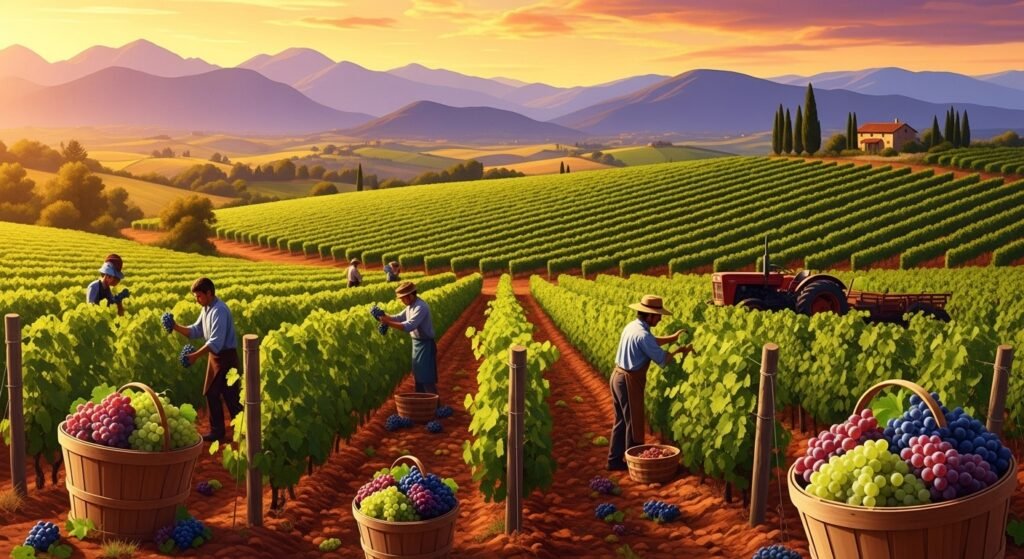
The future appears uncertain for the moment, given the global turmoil. The big brands have more economic power, and to some extent, things are becoming more streamlined and commercial. On the other hand, there are numerous smaller to mid-sized wine producers who are doing great things, leveraging their local territories. Still, it is not easy for them to stand out in the noise of the wine production and marketing industry. I believe that there is significant potential in changing markets beyond the US, in trying to shift the narrative to reflect today’s consumer habits and spending better. The wine world is still entrenched in an old-school mentality regarding how to view wine, how to drink it, and what wine to buy, among other things.
It will also be essential to align with healthy habits and moderate drinking practices that are currently being preached. Wine is an alcoholic beverage, though much less so than spirits, RDTs, etc. Wine has a long and important history; in Europe and primarily in the Mediterranean, it has been considered an aliment and an essential part of the diet historically. Viticulture and winemaking are integral to the cultural heritage of many countries.
Markets such as India, the Middle East, South America, and Africa will be the future. The geopolitical world view is changing before our eyes right now, and the wine world needs to shift, too.
Beyond Amarone: Rewriting the Valpolicella Story
Valpolicella is globally synonymous with Amarone. How can Oseleta — and blends like Cercastelle IGT Veronese — help tell a more diverse story of the region?
I believe in native grapes and lesser-known wine areas and wines. I think shinig a light on grape varieties such as Oseleta, Raboso (in the Piave area in Veneto), Tai Rosso, Verdiso and Perera (used in Prosecco), etc. can contribute to narrate the history of Veneto and its traditions. It might be a way to help shift the narrative to better suit younger generations. The viticultural history could also be linked to farming, ethics, sustainability, etc. The future is surely to lift up these more rare or forgotten grapes that were always used in blends but never got much attention. Many of them will continue to be a part of blends, but it can be important to highlight their existence and their role in a blend. Their historical value.
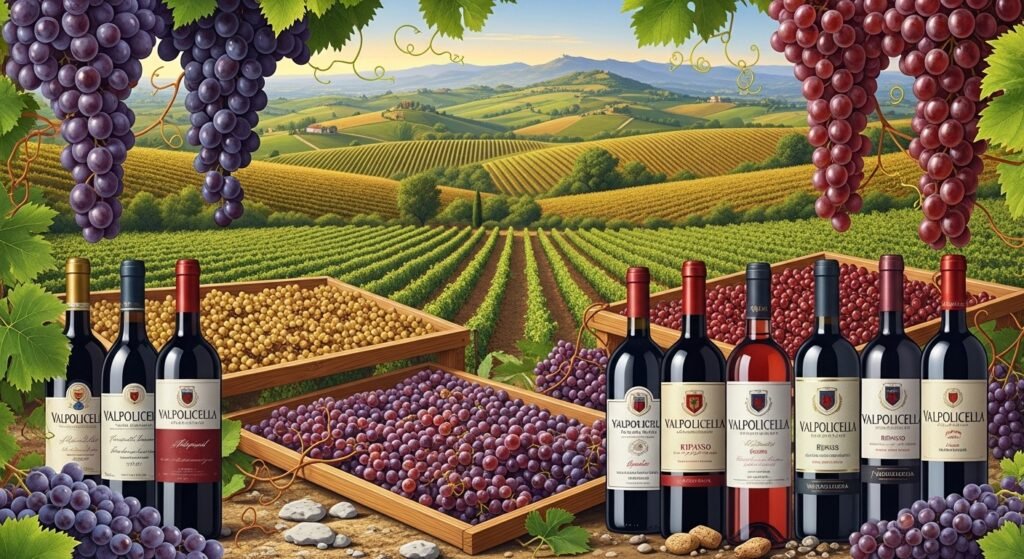
There is also a recent trend of returning to wines made with field blends, i.e., grape varieties that would have been naturally grown together in a vineyard plot in the past. The two or three varieties grown together would be harvested together and vinified together. Examples include Sangiovese grown alongside Canaiolo and Colorino.
Amarone is evolving to some extent, adapting to better align with the changing tastes of consumers and the market, becoming slimmer, fresher, and more elegant. The Amarone wines of producers such as Eleva Winery, Antolini, Valentina Cubi, Massimago, Tedeschi, etc. have or have evolved into a more contemporary style.
There is also an initiative in Veneto, I believe, by the Valpolicella Consortium, to raise the value of Valpolicella DOC and Valpolicella Superiore DOC wines as those that express the “true” Valpolicella and Veneto territory and tradition. The grapes are generally Corvina, Corvinone, and Rondinella, as in Amarone; however, the wines are made without appassimento, thus giving slimmer, fresher, and more fruit-forward wines with excellent drinkability. The Amarone, considered more prestigious, had somewhat overshadowed this category of wines. When, in reality, they are pleasant wines with a clear expression of the Valpolicella and Veneto terroir.
Eleva Winery & the Cercastelle Experiment
You’ve spoken highly of Davide Gaeta and Raffaela Veroli’s work at Eleva Winery. What makes their approach to blending Merlot with Oseleta so compelling? How do you see their experiment shaping the conversation about innovation in Valpolicella?
I like Professor Davide Gaeta and oenologist Raffaela Veroli at Eleva because they are passionate and have invested their souls into the Eleva project. In the spirit of the founder of the winery, Franca Maculan, they have continued to be very invested in non-profit organizations such as AICCA (for people with congenital heart disease) and Orizzonti Sportizi (supports sport projects for the health of children in Camerun, for example, building basket and volleyball pitches).
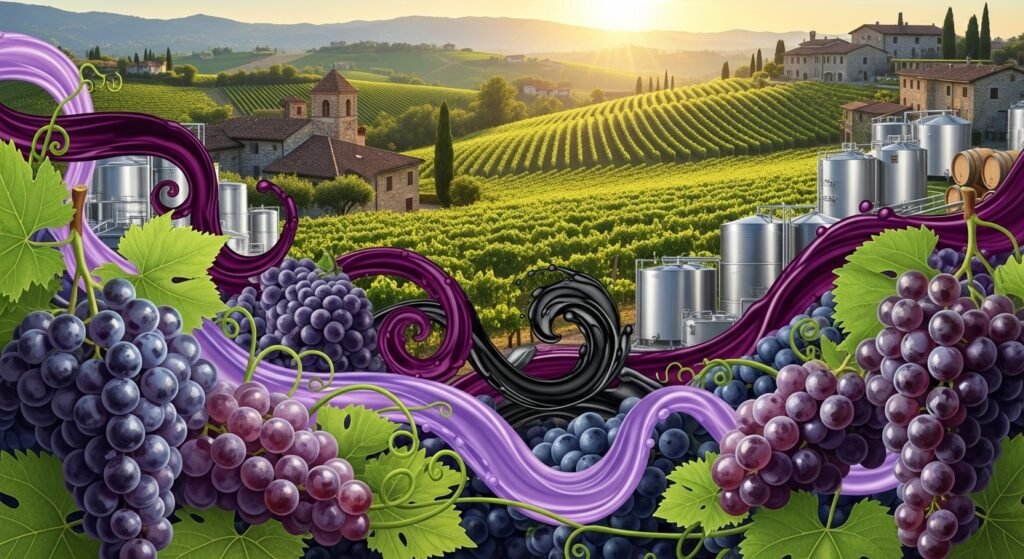
They are organic, they have built their winery building into an already existing rock on the property, making it like a winery where you almost enter into a cave-like structure. The barrel room is located in the far end of the winery, inside the rock itself thus having natural temperature regulation. They have leveraged what they have on the property and the legacy of Franca Maculan, which I believe is the strong point to make their narrative stand out.
Regarding winemaking, they both believe in collaborating with younger consultant oenologists to teach and learn, enhancing the overall winemaking process.
They conducted their own research and experiments to find a suitable grape to blend with the small plot of Merlot grapes they have. They discovered that Oseleta was an excellent option. The Cercastelle IGT Veronese wine has become a wine that distinguishes itself from the Valpolicella wines they produce; it has also become a key wine in telling the story of the local territory from a different perspective.
As mentioned above, they can leverage their story as it fits what consumers and younger generations are looking for today. Like many wineries, they have to have the courage to take that step to be less safe and traditional, and more daring, or “audacious” and “weird,” as American futurist, marketing thought leader, university educator, and author Mark W. Schaefer has said. This will be needed to cut through the noise and rise above mainstream content and AI-generated content.
Wine-Making and Vinification
Oseleta has unique characteristics — small berries, thick skins, and pronounced tannins. How do winemakers approach fermentation, maceration, and aging to highlight its qualities without overpowering the wine? How do blending decisions with Merlot or other Valpolicella grapes enhance or temper its profile? Are there innovative techniques being explored — such as amphora aging, natural yeasts, or extended lees contact — that you find particularly exciting?
If blending the grape with, for example, Merlot or making it as a monovarietal wine, I think it largely depends on the winery’s and winemaker’s choices. It can also depend on how many Oseleta plants they have access to, if there is enough for a monovarietal wine. I cannot say much about this, though; one would need to look into each winery.
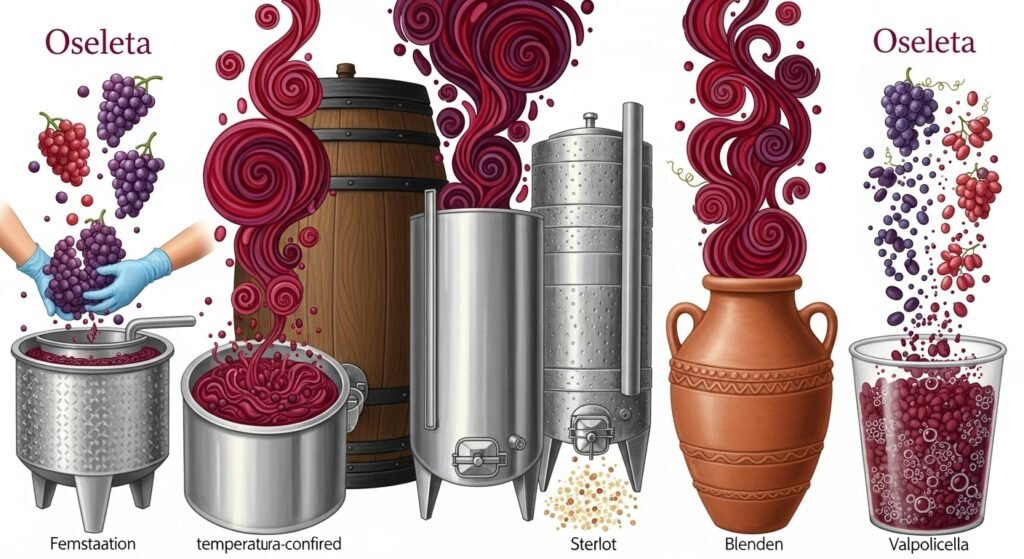
Oseleta is still made as a monovarietal wine by very few producers. There are approximately 15 hectares in total planted with Oseleta in Veneto, so it is unlikely to be a significant producer of Oseleta wines. It can be a good niche wine to leverage as a part of the Veneto viticultural heritage.
I prefer 100 per cent Oseleta wines to get the whole character and personality of Oseleta. I would like to see more ageing in big casks, or experimenting with maturation in ceramic vessels or amphora. I think barrique is too invasive for Oseleta; I think its varietal essence would come out better with big casks or amphora. I am sure we will see producers trying ageing in such vessels in the future.
For now, Eleva is ageing in tonneaux. Villa Cordevigo is producing a 100 per cent Oseleta wine that undergoes appassimento and is aged in tonneaux for an extended period, while Zyme makes its Oz 100 per cent Oseleta, which is also aged in barrique for approximately 6 years.
Native Grapes as Cultural Capital
You often argue that native grapes are a way of communicating terroir and culture. Why do you believe Oseleta, in particular, carries cultural and emotional weight for the Valpolicella region?
As mentioned above, I believe in native grapes and lesser-known wine areas and wines. I think native grapes are cultural capital and an essential part of the viticultural heritage. Together with other lesser-known and rare grapes, in this case in Veneto, I believe Oseleta and other grapes can help to deepen the narrative and go beyond Amarone and Prosecco in Veneto.
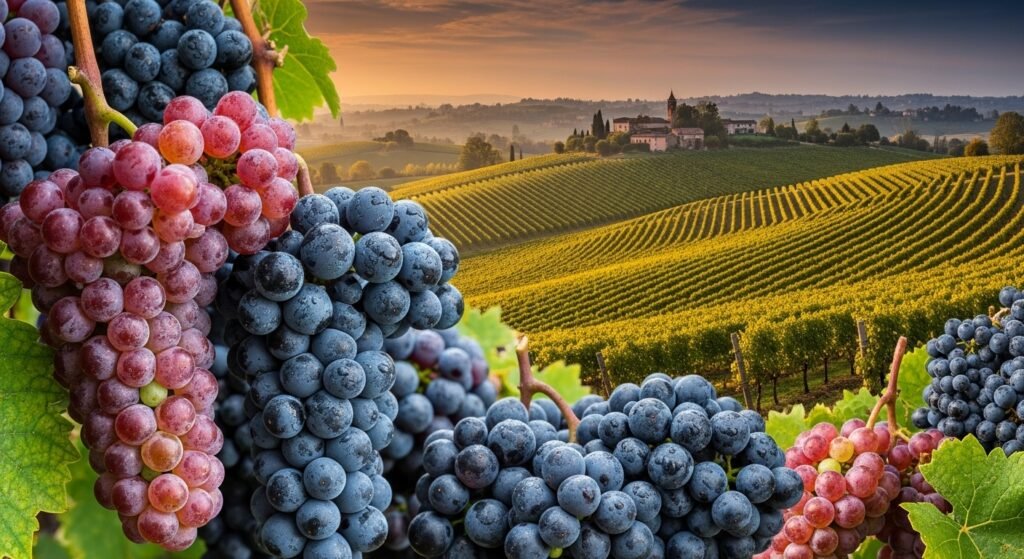
Some research says that younger generation are looking for the history, the story behind the wines, the culture, ethics, etc. and then grapes as Oseleta can contribute to the storytelling. Other research says that consumers wants a more simple approach, they want to buy a wine without being lectured about the technical factors, the tasting notes, the ratings, they just want a simple story or anecdote about the wine that appeals to them. Then Oseleta and similar grapes can still be the future because they can add a different and fascinating story, it can also be a way to make consumers curious about trying something new.
The future is surely to lift up these more rare or forgotten grapes that were always used in blends but never got much attention. Many of them will continue to be a part of blends, but it can be important to highlight their existence and their role in a blend. Their historical value.
Terroir Storytelling
How do Italian producers leverage micro-terroirs — from Veneto to Sicily — to differentiate wines in an increasingly competitive global market? How important is terroir authenticity in consumer perception today?
There are those saying that consumers want simplicity and to buy wine, not to get the heavy info, tasting notes, tech sheets, soil info, etc that is often given by wineries, sommeliers, wine educators, etc. Others say that the younger genertations are interested in the people and its stories at the wineries, the terroir, the sustainability, ethics, etc. I think it might be a way of how you tell these stories. There is a need for a different focus in wine storytelling, different perspectives, formats, media, etc can be used to make the storytelling more interesting.
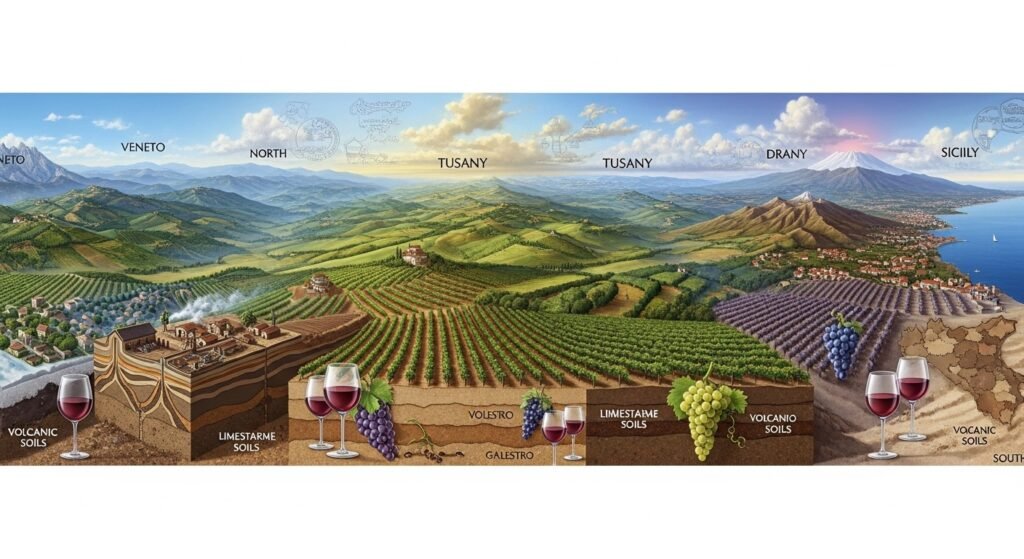
I think that wineries themselves in Italy, so far, are not leveraging their history, tradition, farming perspectives, terroir, etc., enough in their wine communication. Setting up a strategy requires some effort. Not many wineries, not even larger ones, are using newsletters to share their story engagingly and as a means to nurture their subscribers, keeping them interested and excited about the winery. Most wineries send out a newsletter when they have an offer and want their subscribers to make a purchase.
So, yes, terroir authenticity is essential today. I think it is vital to find new, fun ways to communicate about terroir, differences in terroir, and how it makes a specific winery, wine region, or area stand out. There is great potential for improvement for wineries and consortia.
The New Luxury Code
You wrote that “luxury in the metamodern era is more about unique and rare experiences than expensive wines.” How do niche grapes like Oseleta play into this shift? Are we seeing a democratization of luxury in wine?
I think wine is in general democratic, at least in the Mediterrean part of Europe where wine has been a part of the cultural heritage since way back in history. It was, and is to a certain extent, a part of the everyday culture. Of course, there is also expensive wines like the hyped up brands sich as Sassicaia or Masseto, or Barolo and Brunello wines. There will always be people who look at wines more like an investment, and who are not really interested in the wine itself, but probably more for the hype/privilege it stands for, or the earnings you hope to make by investing in such wines. This is a small group of people though. I do not really see that as a definition of luxury anymore.
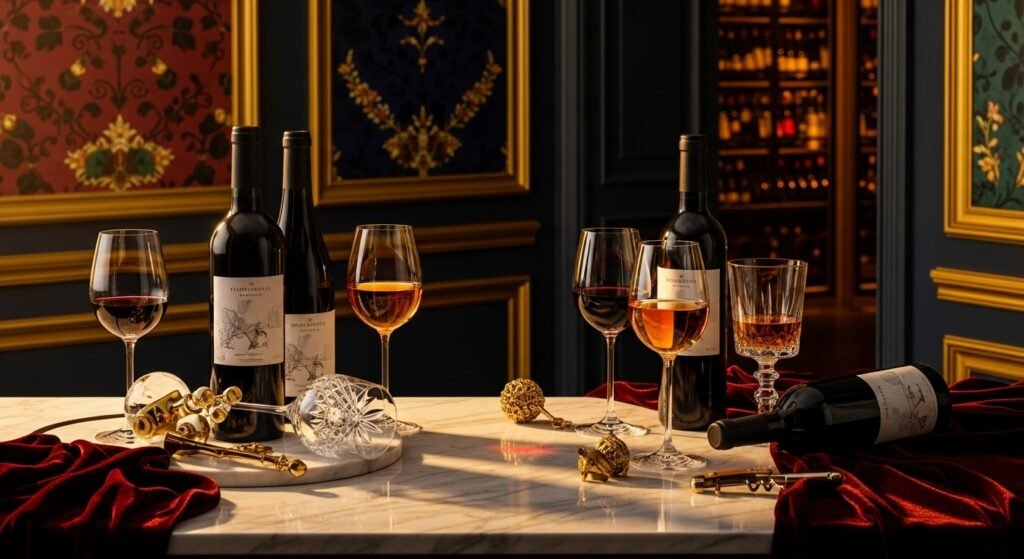
There is a decline in global wine consumption revenue (about 3.3 per cent in 2024, compared to 2023, according to OIV; 9 per cent since 2019), as people are drinking less wine. Whether this is due to economic pressure resulting from higher living costs since the pandemic, geopolitical tensions with conflicts in Ukraine, Israel, and Gaza, or democratic instability in the US, for health reasons and temperance movements, or whether younger generations are drinking less wine or differently, remains to be seen. I am not sure. It is likely a combination of several factors. Rich people are getting richer, middle-class and lower-income people are getting poorer.
There will always be people who want to spend a significant amount of money on expensive wine as a form of status symbol, similar to purchasing a Rolex or other luxury items. Still, I do not believe that it is considered true luxury anymore. In today’s uncertain world, the pursuit of purpose and value becomes increasingly important, especially among Gen Z and Millennials. Luxury thus becomes something different; it becomes an experience that fulfils you, that is less common, takes more effort to find.
Colleagues in the wine tourism sector have informed me that individuals with disposable income are seeking to experience and learn more about rare grape varieties, lesser-known wine regions, and unique experiences that combine wine with other local and authentic artisans, artisanal products, and specific cultural customs of an area.
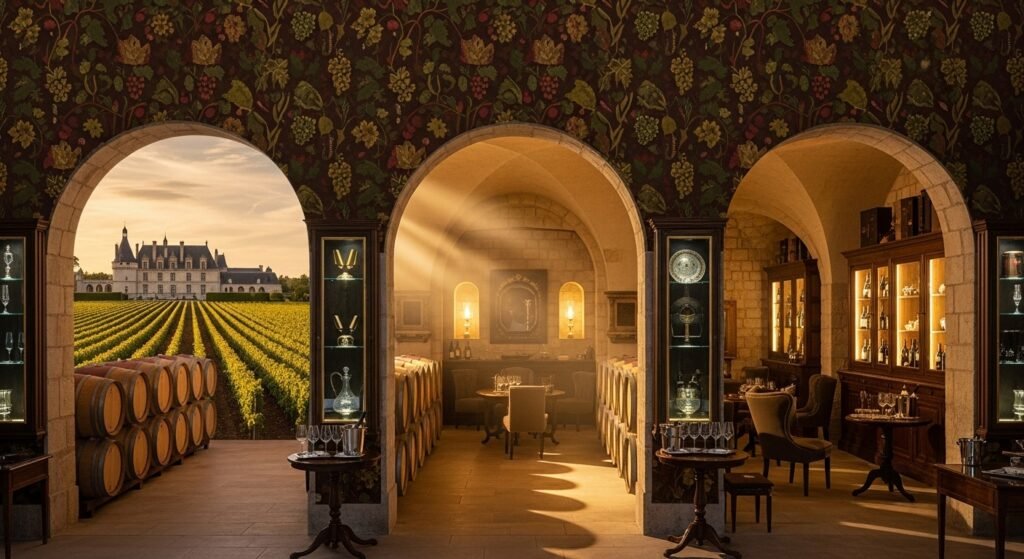
Travelling “slow” or in a “kinder” way, as a marketing friend of mine has coined it. Here she means “kind” in the sense of travelling with respect for the local territory, its inhabitants and daily life. This is the luxury of the future. “Mass” tourism and buying the usual wine brands, even the ones that are a bit more expensive, will in this sense not be luxury anymore, but more part of a mainstream idea of wine.
I think the fact that many categories of people, not only Gen Z, are drinking less and are not interested in the “usual” status symbol wines, is a sign that things are changing and that professionals in the wine world need to change their perspective as well. A shift is underway.
And, in this sense, I think lesser-known grapes, such as Oseleta, can play a role in the ongoing change. It can help to tell the story of a territory, its viticultural culture, history, and customs. It can also attract people who are willing to spend on unique or rare wine tourism experiences, helping smaller and more artisanal wineries to establish their profiles. Then, whether to define it as luxury or as “low” or “kind” wine tourism is for others to decide.
Climate-Resilient Future
With climate change impacting traditional regions, how do you see varieties like Oseleta — with their small, thick-skinned berries — contributing to the resilience of Italian vineyards?
Oseleta is said to be resilient to climate change, thanks to its disease resistance, and also resistant to frost. So, it could for sure be a grape for the future. However, it is also true that only 15 hectares in total have been planted in Veneto so far. This grape variety produces tannic wines with character, which is true, but so far, it requires a lot of storytelling to sell.
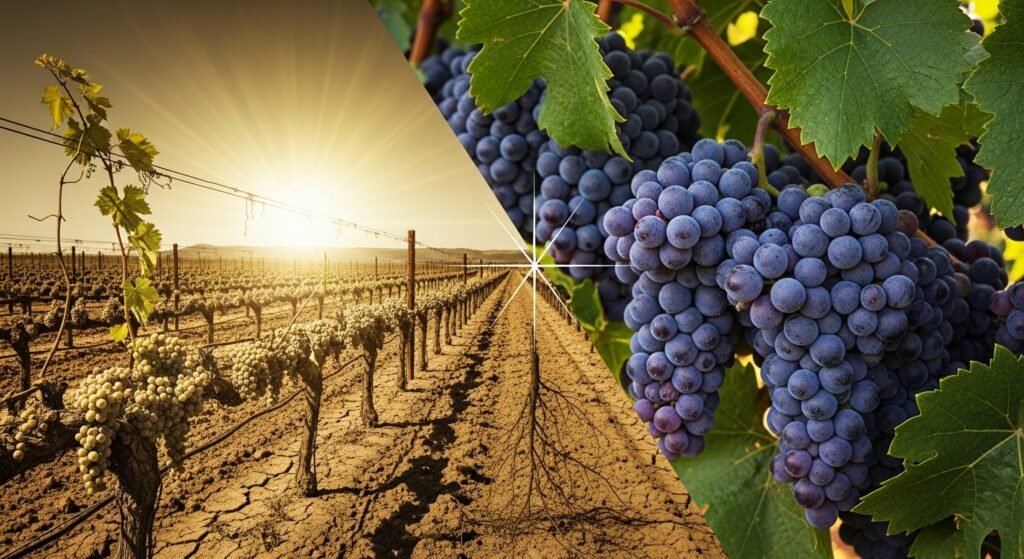
We will see if the future will highlight grapes such as Oseleta or focus more on hybrid grapes. I believe that in the Italian mindset, it is still easier to consider integrating resistant Vitis vinifera grapes, such as the crosses Manzoni Bianco, Müller-Thurgau, and Rebo, than Piwi grapes in DOC and DOCG denominations. Oseleta could perhaps also be an option for the future in this sense. However, in France, they have already begun to incorporate hybrid grapes into denominations such as Bordeaux and Champagne.
Looking Ahead
What is your dream scenario for Oseleta in 2030? How do you imagine its place in the global wine conversation — on restaurant lists, at tastings, or even in pop culture?
In my ideal scenario, native grapes like Oseleta would take their place in the sun and be leveraged to change the narrative about wine. They could be used to tell the story of their original territory and in relation to their historical role in blending grapes. Such rare grapes would have their place on wine lists at restaurants and in wine bars, telling a different story about a territory and an appellation.
Such grapes could be used in tastings to attract younger wine drinkers by perhaps shaping the wine tastings differently, not according to the usual tasting notes, but to put Oseleta in a larger regional context with other appellations or wines, other lesser-known grape varieties, or creating a tasting itinerary through local music, images, art, history, or other.
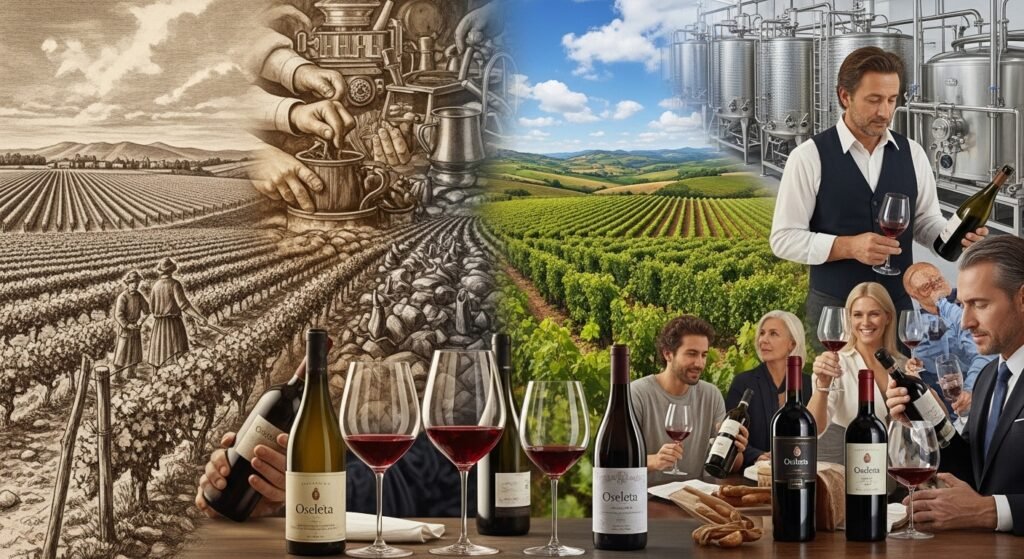
For Gen Z, why not create a gaming experience around Oseleta and its history? Or perhaps a cartoon?
Create hiking experiences – virtual and IRL – around the soil, climate, and overall terroir where Oseleta thrives.
Since birds often like Oseleta, why not create an ornithology seminar about local birds in Veneto? It is just a thought, if there are people interested in that.
There are many ways Italian wine could be presented by shifting the perspective and the way we tell stories, the formats we use, and how we approach wine tasting, among other approaches.
The important thing is to make wine fun again, without losing depth, structure, and complexity in what we do. We need to go beyond wine scores and presentations where consumers and wine lovers are preached to by wine professionals on how or what they should drink. There is a world filled with fascinating grape varieties, wine regions, and wines to discover. There is no need to drink only wines from a few wine appellations and wineries.
— Suchetana Choudhury (suchetana.choudhuri@agrospectrumindia.com)